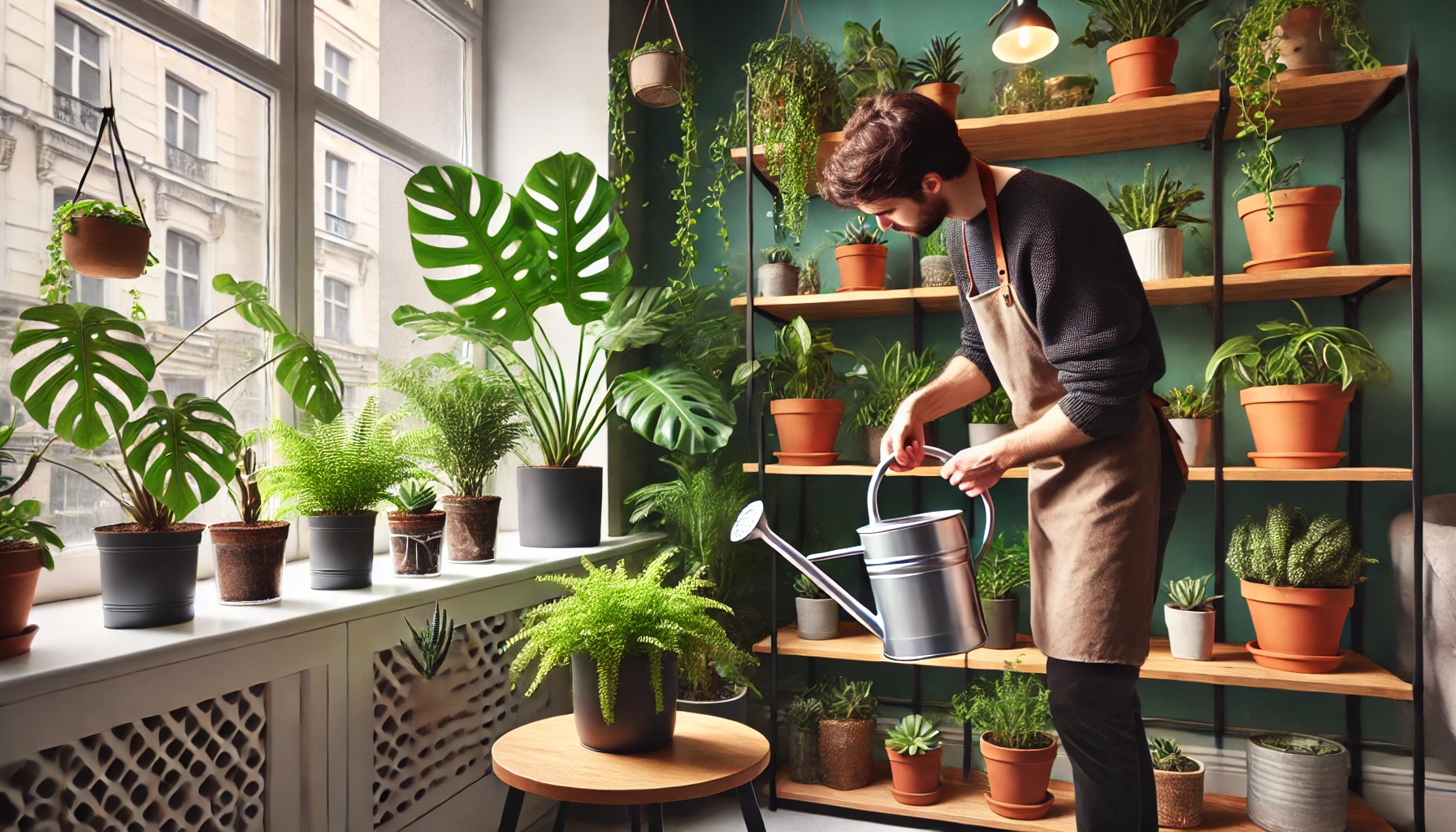Watering is one of the most crucial aspects of plant care, yet it’s a common area where mistakes happen. Overwatering or underwatering can harm your plants, so understanding how, when, and how much to water is key to keeping your greenery thriving. In this guide, we’ll explore practical tips to help you water your plants properly and avoid common pitfalls.
Why Proper Watering Matters
Water is essential for plant life—it helps transport nutrients, supports photosynthesis, and keeps cells hydrated. However, too much or too little water can:
- Overwatering: Lead to root rot, yellowing leaves, and fungus.
- Underwatering: Cause wilting, brown edges on leaves, and stunted growth.
The goal is to find the perfect balance based on the specific needs of your plants.
Know Your Plant’s Watering Needs
Different plants have different water requirements. Here’s a quick guide to common categories:
- Tropical Plants (e.g., Ferns, Peace Lilies)
- Thrive in moist soil; water them regularly but avoid waterlogging.
- Succulents and Cacti (e.g., Aloe Vera, Jade Plant)
- Prefer well-drained soil and minimal watering. Let the soil dry out completely between waterings.
- Flowering Plants (e.g., Orchids, Geraniums)
- Need consistent moisture, especially during blooming seasons.
- Indoor Foliage Plants (e.g., Monstera, Pothos)
- Typically enjoy moderate watering when the topsoil feels dry to the touch.
General Watering Tips
1. Test the Soil Moisture
Before watering, check if your plant really needs it. Insert your finger about 2 inches into the soil:
- Dry: Time to water.
- Moist: Wait a few more days.
For a more precise measurement, consider using a moisture meter.
2. Water Early in the Day
Morning watering is ideal as it allows plants to absorb moisture before the sun evaporates it. Avoid watering at night to reduce the risk of fungal growth.
3. Use the Right Amount of Water
- Water until it flows out of the drainage holes in the pot, ensuring the roots are adequately hydrated.
- Discard excess water from saucers to prevent root rot.
4. Water at the Base
Aim to water the soil directly rather than the leaves. Wet leaves can promote fungal diseases and attract pests.
5. Consider the Environment
Environmental factors play a significant role in watering frequency:
- Hot weather: Increases evaporation, so plants may need more frequent watering.
- Humid conditions: Reduce watering frequency.
Common Watering Mistakes and How to Avoid Them
- Overwatering
- Mistake: Frequent watering without checking soil moisture.
- Solution: Establish a schedule and test the soil before watering.
- Using Improper Containers
- Mistake: Pots without drainage holes trap water, causing root rot.
- Solution: Always use containers with proper drainage.
- Watering on a Fixed Schedule
- Mistake: Watering every day or every week without observing the plant’s condition.
- Solution: Adjust based on the plant’s needs and environmental changes.
- Ignoring Plant-Specific Needs
- Mistake: Treating all plants the same.
- Solution: Research each plant’s specific requirements.
Adapting to Seasonal Changes
Plants have varying water needs depending on the season:
- Summer: More frequent watering due to heat and growth.
- Winter: Less watering as growth slows down.
Tools to Help with Watering
Investing in a few tools can make watering easier and more efficient:
- Self-Watering Pots: Ideal for those who travel or have a busy schedule.
- Watering Cans with Long Spouts: Allow precise watering without splashing.
- Moisture Meters: Provide accurate soil readings.
The Bottom Line
Mastering the art of watering takes observation and a bit of patience. By paying attention to your plants’ needs, soil conditions, and environmental factors, you can ensure they receive the perfect amount of water to thrive. Remember, when in doubt, it’s better to underwater than overwater—your plants will thank you with lush growth and vibrant health.
